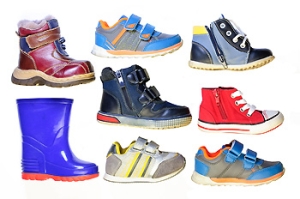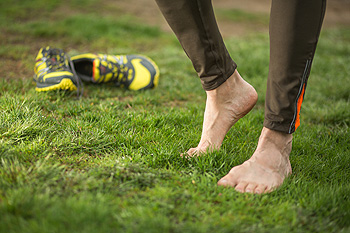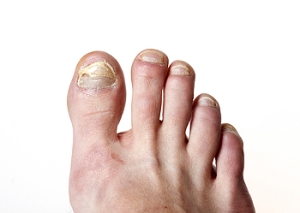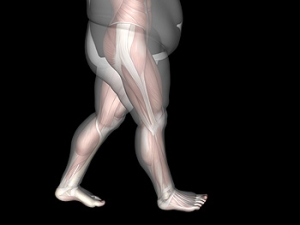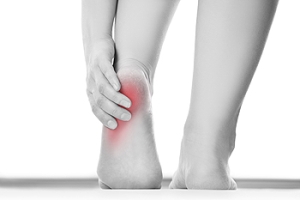
Foot Conditions That Can Develop as Children Run Barefoot
 Summer is the season when children like to remove their shoes and run barefoot. Despite the freedom and enjoyment this can provide, there may be foot ailments that can develop. These can include insect bites, blisters, minor cuts and bruises. Sweaty feet may be prevented when a foot powder is applied at the beginning of the day. Splinters can also be a common condition among children, and there may be effective herbal remedies that can be applied for prompt removal. If you would like additional information about effective treatment techniques for minor wounds on children’s feet, please confer with a podiatrist.
Summer is the season when children like to remove their shoes and run barefoot. Despite the freedom and enjoyment this can provide, there may be foot ailments that can develop. These can include insect bites, blisters, minor cuts and bruises. Sweaty feet may be prevented when a foot powder is applied at the beginning of the day. Splinters can also be a common condition among children, and there may be effective herbal remedies that can be applied for prompt removal. If you would like additional information about effective treatment techniques for minor wounds on children’s feet, please confer with a podiatrist.
The health of a child’s feet is vital to their overall well-being. If you have any questions regarding foot health, contact one of our podiatrists of New York Foot and Ankle. Our doctors can provide the care you need to keep you pain-free and on your feet.
Tips for Keeping Children's Feet Healthy
- Make sure their shoes fit properly
- Look for any signs of in-toeing or out-toeing
- Check to see if they have Clubfoot (condition that affects your child’s foot and ankle, twisting the heel and toes inward) which is one of the most common nonmajor birth defects.
- Lightly cover your baby’s feet (Tight covers may keep your baby from moving their feet freely, and could prevent normal development)
- Allow your toddler to go shoeless (Shoes can be restricting for a young child’s foot)
- Cut toenails straight across to avoid ingrown toenails
- Keep your child’s foot clean and dry
- Cover cuts and scrapes. Wash any scratches with soap and water and cover them with a bandage until they’ve healed.
If you have any questions, please feel free to contact one of our offices located in Franklin Square, Bethpage, Brooklyn, and Massapequa, NY . We offer the newest diagnostic and treatment technologies for all your foot care needs.
How to Care for Your Child's Feet
It is never normal for a child to experience pain in his or her feet. Foot pain that lasts more than a few days and limits a child’s ability to walk should be examined by a podiatrist. Many adult foot ailments originate in childhood and may be present at birth. Common foot issues that are experienced by children are pediatric flat foot, Sever’s disease, ingrown toenails, and plantar warts.
A child’s foot grows rapidly during the first year, allowing it to reach almost half of their adult foot size. Consequently, foot specialists consider the first year to be the most crucial point in the foot development process. There are ways you can help ensure that your child’s foot develops properly. One way is to carefully look at your baby’s feet. If you notice any deformities, you should immediately seek professional care. You should also loosely cover your child’s foot, since tight coverings may prevent movement and inhibit normal development. Another tip is to change the baby’s positioning throughout the day. If your baby lies down in one spot for too long, it may put an excess amount of strain on the feet and legs.
It is best that you try not to force a child to start walking. Children will begin to walk when they are both physically and emotionally capable to do so. You should also avoid comparing your child’s walking progress with other children because the age range for independent walking may range. When your child’s feet begin to develop, you may need to change both their shoe and sock size every few months to allow room for their feet to grow.
Kids are sometimes prone to splinters, cuts, and severe injuries because they tend to walk around barefoot. This also makes them more susceptible to developing plantar warts which is a condition caused by a virus that invades the sole of the foot through breaks in the skin. These ailments can be avoided by making sure your child wears shoes in unsanitary environments. You should also wash any minor cuts or scrapes on your child’s feet. It is a myth that exposure to fresh air will heal injuries; fresh air will only expose your child’s cuts to germs.
As a parent, you should ensure that your child’s feet are developing properly and are being properly maintained. Consequently, it is important that you perform routine inspections on his or her feet to detect any injuries or deformities in their early stages. Early detection and treatment will help to ensure that your child does not develop any serious foot conditions.
Are You Suffering From Ingrown Toenails?
Complications of Excessive Sweating in the Feet
Everybody sweats from their feet, but sometimes, the amount of sweat can be too much. Excessive foot sweat is an indicator of plantar hyperhidrosis, which is a medical condition where the sweat glands produce too much sweat in conditions that would not normally cause much sweating. If you have plantar hyperhidrosis, seeking treatment is recommended. This is because sweating excessively from your feet can lead to various complications. These can include an increase in the risk of developing cuts and breaks in the skin, which can lead to foot infections, such as athlete’s foot. Infections can be especially dangerous if you have other health problems that affect the feet, like diabetes, peripheral neuropathy, or peripheral artery disease. Excessive foot sweat can also be embarrassing, leading to psychological distress and avoidance of certain social situations. To learn more about plantar hyperhidrosis and the treatments available for this condition, please speak with a podiatrist.
If you are suffering from hyperhidrosis contact one of our podiatrists of New York Foot and Ankle. Our doctors can provide the care you need to attend to all of your foot and ankle needs.
Hyperhidrosis of the Feet
Hyperhidrosis is a rare disorder that can cause people to have excessive sweating of their feet. This can usually occur all on its own without rigorous activity involved. People who suffer from hyperhidrosis may also experience sweaty palms.
Although it is said that sweating is a healthy process meant to cool down the body temperature and to maintain a proper internal temperature, hyperhidrosis may prove to be a huge hindrance on a person’s everyday life.
Plantar hyperhidrosis is considered to be the main form of hyperhidrosis. Secondary hyperhidrosis can refer to sweating that occurs in areas other than the feet or hands and armpits. Often this may be a sign of it being related to another medical condition such as menopause, hyperthyroidism and even Parkinson’s disease.
In order to alleviate this condition, it is important to see your doctor so that they may prescribe the necessary medications so that you can begin to live a normal life again. If this is left untreated, it is said that it will persist throughout an individual’s life.
A last resort approach would be surgery, but it is best to speak with your doctor to find out what may be the best treatment for you.
If you have any questions please feel free to contact one of our offices located in Franklin Square, Bethpage, Brooklyn, and Massapequa, NY . We offer the newest diagnostic and treatment technologies for all your foot and ankle needs.
Hyperhidrosis of the Feet
Each foot, on average, has about 250,000 eccrine sweat glands that produce half a pint of sweat each day. Sweating is a natural and important bodily function. It regulates the body’s temperature by cooling the skin so that it does not overheat. In individuals with hyperhidrosis, the sympathetic nervous system works in "overdrive", producing far more sweat than what is required. People with plantar hyperhidrosis experience an excess amount of sweat on their feet. It is estimated that 2% to 3% of all Americans suffer from some form of hyperhidrosis. This condition is often caused by neurologic, endocrine, infectious, and other systemic disease. Other factors that may trigger the condition are heat and emotions.
People with hyperhidrosis may notice an overabundance of sweat on their feet, along with a strong odor. The feet may also have a wet appearance coupled with infections such as athlete’s foot or toenail fungus. The sweat may even appear in low temperatures, such as during the winter months. People with plantar hyperhidrosis often need to change their socks several times throughout the day.
The specific cause of hyperhidrosis is unknown, and many believe it may be caused by over-activity. However, others believe the condition is genetic. Caffeine and nicotine are known to cause excitement and nervousness which are two emotions that may make the condition worse.
If you are looking to treat your hyperhidrosis the most important thing you should do is wash your feet every day. You may even need to wash your feet twice a day, if necessary. You should also make sure you are wearing the right socks. Wool and cotton socks are both known to be good for ventilation, meaning they allow the feet to breathe. You should avoid socks made from nylon which trap moisture and lead to sogginess. Other common treatment options are over-the-counter antiperspirants that contain a low dose of metal salt. In some cases, prescription strength antiperspirants that contain aluminum chloride hexahydrate may be necessary. In severe cases, surgery may be required.
Untreated hyperhidrosis can easily lead to complications. Some complications that may arise from the disorder include nail infections, warts, and bacterial infections. Consequently, it is important that you seek treatment from your podiatrist if you suspect that you may have plantar hyperhidrosis.
Toenail Fungus Can Cause Embarrassment
 Toenail fungus is a foot condition that can be unsightly. Patients who have this ailment are often embarrassed by the appearance of their feet. It is considered to be contagious, and the fungus that causes the infection is found in public swimming pools, shower room floors, and surrounding areas. The toenail that is most likely to be affected is on the big toe, and one of the first symptoms can be the toenail turning yellow or white. The nail may gradually crumble and lift, and in severe cases, may fall off. If you have toenail fungus, it is strongly suggested that you speak to a podiatrist who can recommend the best treatment option for you.
Toenail fungus is a foot condition that can be unsightly. Patients who have this ailment are often embarrassed by the appearance of their feet. It is considered to be contagious, and the fungus that causes the infection is found in public swimming pools, shower room floors, and surrounding areas. The toenail that is most likely to be affected is on the big toe, and one of the first symptoms can be the toenail turning yellow or white. The nail may gradually crumble and lift, and in severe cases, may fall off. If you have toenail fungus, it is strongly suggested that you speak to a podiatrist who can recommend the best treatment option for you.
For more information about treatment, contact one of our podiatrists of New York Foot and Ankle. Our doctors can provide the care you need to keep you pain-free and on your feet.
Toenail Fungus Treatment
Toenail fungus is a condition that affects many people and can be especially hard to get rid of. Fortunately, there are several methods to go about treating and avoiding it.
Antifungals & Deterrence
Oral antifungal medicine has been shown to be effective in many cases. It is important to consult with a podiatrist to determine the proper regiment for you, or potentially explore other options.
Applying foot powder on the feet and shoes helps keep the feet free of moisture and sweat.
Sandals or open toed shoes – Wearing these will allow air movement and help keep feet dry. They also expose your feet to light, which fungus cannot tolerate. Socks with moisture wicking material also help as well.
If you have any questions please feel free to contact one of our offices located in Franklin Square, Bethpage, Brooklyn, and Massapequa, NY . We offer the newest diagnostic tools and technology to treat your foot and ankle needs.
Treating Toenail Fungus
Fungal infection of the toenail, or onychomycosis, typically appears as a gradual change in a toenail’s texture and color that involves brittleness and darkening. The fungal infection itself occurs beneath the surface of the nail. Aside from discoloration, other symptoms include the collection of debris beneath the nail plate, white marks on the nail plate, and a foul odor emanating from the nail. If ignored, the infection can spread into other nails and the skin; in severe cases, it can hinder one’s ability to work or walk.
The toenails are particularly vulnerable to contracting infection in moist environments where people are likely to be walking barefoot, such as around swimming pools, public showers, and locker rooms. Fungal infection may also be more likely to occur in nail beds that have been injured, and sufferers of chronic diseases such as diabetes, circulatory problems, or immunodeficiency conditions are particularly prone to developing fungal nails.
Fungal nails can be primarily prevented by practicing proper hygiene and regularly examining the feet and toes. Carefully washing the feet with soap and water and thoroughly drying the feet afterwards are essential. Other tips include wearing shower shoes in public areas, changing shoes and socks daily, keeping toenails clipped at a short length, wearing breathable shoes that fit properly, wearing moisture-wicking socks, and disinfecting home pedicure tools and instruments used to cut nails.
Fungal nail treatment may vary between patients and the severity of the condition. Your podiatrist may suggest a daily routine of cleansing that spans over a period of time to ease mild infections. Over-the-counter or prescription antifungal agents may also be prescribed, including topical and/or oral medications. Debridement, or the removal of diseased nail matter and debris, may also be performed. In more severe cases, surgical treatment may be needed. In some instances, the temporary removal of the fungal nail allows for the direct application of a topical antifungal to the nail bed. In other cases, a chronically painful fungal nail that has not responded to other treatments may be permanently removed; this allows the infection to be cured and avoids the growth of a deformed nail.
What Can Happen to the Feet as a Result of Being Obese?
 Heel pain may be increased in overweight patients. This can be a result of the added weight that the heels must endure, and chronic foot conditions may develop. The additional weight may cause obese patients to lose interest in exercising, yet exercise is an essential key to losing unwanted pounds. Some patients notice that their foot size has increased, or that their feet have become wider. Additionally, specific forms of arthritis may develop, which can include gout or osteoarthritis. Swelling, pain, and overall foot discomfort may be felt from the strain of the extra weight, in addition to plantar fasciitis and arthritis in the back of the foot. If you are overweight and are experiencing any type of foot pain, it is strongly recommended that you speak to a podiatrist who can properly diagnose and effectively treat this type of pain.
Heel pain may be increased in overweight patients. This can be a result of the added weight that the heels must endure, and chronic foot conditions may develop. The additional weight may cause obese patients to lose interest in exercising, yet exercise is an essential key to losing unwanted pounds. Some patients notice that their foot size has increased, or that their feet have become wider. Additionally, specific forms of arthritis may develop, which can include gout or osteoarthritis. Swelling, pain, and overall foot discomfort may be felt from the strain of the extra weight, in addition to plantar fasciitis and arthritis in the back of the foot. If you are overweight and are experiencing any type of foot pain, it is strongly recommended that you speak to a podiatrist who can properly diagnose and effectively treat this type of pain.
Obesity has become very problematic at this point in time and can have extremely negative effects on the feet. If you’re an obese individual and are concerned about your feet, contact one of our podiatrists from New York Foot and Ankle. Our doctors can provide the care you need to keep you pain-free and on your feet.
Obesity and Your Feet
Since your feet are what support your entire weight when standing, any additional weight can result in pain and swelling. Being overweight is one of the main contributors to foot complications.
Problems & Complications
Extra Weight – Even putting on just a few extra pounds could create serious complications for your feet. As your weight increases, your balance and body will shift, creating new stresses on your feet. This uneven weight distribution can cause pain, even while doing the simplest tasks, such as walking.
Diabetes – People who are overweight are at serious risk of developing type-2 diabetes, which has a drastic impact on the health of your feet. As you get older, your diabetes might worsen, which could lead to loss of feeling in your feet, sores, and bruises. You could also become more prone to various infections.
Plantar fasciitis – Pressure and stress that is placed on muscles, joints, and tendons can trigger plantar fasciitis, which is an inflammation of tissue that forms along the bottom of the foot.
If you have any questions please feel free to contact one of our offices located in Franklin Square, Bethpage, Brooklyn, and Massapequa, NY . We offer the newest diagnostic and treatment technologies for all your foot and ankle needs.
How Obesity Affects Your Feet
Gaining weight can happen suddenly and at any time. Usually you won’t notice the extra weight until your feet start hurting at the end of the day. This happens as your feet begin adjusting to carrying more weight. Foot swelling and pain are two of the biggest side effects of having gained weight.
Many foot-related problems can occur even after just putting on a few pounds. This includes the body ‘compensating’ by changing the way it moves. You may find yourself putting extra weight on the wrong parts of your feet and even leaning forward a bit. Your feet were designed to carry a healthy, normal body weight. Extra weight places undue stress on them.
Being overweight often causes the development of Type-2 diabetes, causing leg and foot pain. Older people who do not attempt to control their condition can even lose sensation and feeling in their legs and feet. This can lead to the development of small sores that can lead to serious infection.
Extra stress placed on the joints, tendons and muscles in the feet as a result of extra body weight may also cause heel spurs, or plantar fasciitis. Plantar fasciitis is an inflammation of the foot tissue, causing stiffness and pain when walking and climbing stairs. This can usually be relieved by foot stretches and custom made orthotic shoe-inserts.
Problems in the feet triggered by obesity can be treated by paying special attention to footwear. Proper support shoes that allow for good circulation, especially in the arch and ankle, are vital. A podiatrist can help you find what sort of shoe is most suitable for your feet. They can also measure you for special orthotics if necessary.
It could also be high time to start losing weight in order to treat and prevent diabetes as well as other life threatening diseases. Some methods include yoga and water aerobics, which benefit your entire body without placing stress on your feet. Don’t risk losing your feet by losing interest in them. Take care of your feet and your body, as they deserve the very best.
Plantar Fasciitis and Tips For Choosing the Right Footwear
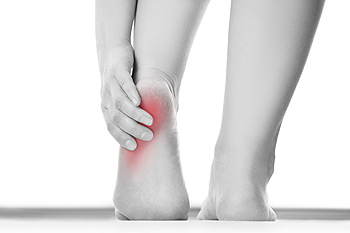 Many people experience heel pain, stiffness, and swelling from plantar fasciitis. Choosing the right footwear, however, can help ease the pain. First off, make sure that the shoes you wear are your size and properly fit your foot. Next, check to see that your toes can move freely and aren’t cramped. Choose shoes that have a good amount of heel cushioning. Socks are also important and shouldn’t be too big; they should be breathable and thinner so as not to take up too much shoe space. Shoes with removable soles allow you to swap soles for a better fit. Arch support is vital and can help prevent plantar fasciitis. Elevated heels in shoes can help distribute body weight away from the back of the foot. Taken together, these tips can help ease the pain of plantar fasciitis. It is important to see a podiatrist who can provide more tips for selecting shoes and alleviating plantar fasciitis.
Many people experience heel pain, stiffness, and swelling from plantar fasciitis. Choosing the right footwear, however, can help ease the pain. First off, make sure that the shoes you wear are your size and properly fit your foot. Next, check to see that your toes can move freely and aren’t cramped. Choose shoes that have a good amount of heel cushioning. Socks are also important and shouldn’t be too big; they should be breathable and thinner so as not to take up too much shoe space. Shoes with removable soles allow you to swap soles for a better fit. Arch support is vital and can help prevent plantar fasciitis. Elevated heels in shoes can help distribute body weight away from the back of the foot. Taken together, these tips can help ease the pain of plantar fasciitis. It is important to see a podiatrist who can provide more tips for selecting shoes and alleviating plantar fasciitis.
Plantar fasciitis can be very painful and inconvenient. If you are experiencing heel pain or symptoms of plantar fasciitis, contact one of our podiatrists from New York Foot and Ankle. Our doctors can provide the care you need to keep you pain-free and on your feet.
What Is Plantar Fasciitis?
Plantar fasciitis is the inflammation of the thick band of tissue that runs along the bottom of your foot, known as the plantar fascia, and causes mild to severe heel pain.
What Causes Plantar Fasciitis?
- Excessive running
- Non-supportive shoes
- Overpronation
- Repeated stretching and tearing of the plantar fascia
How Can It Be Treated?
- Conservative measures – anti-inflammatories, ice packs, stretching exercises, physical therapy, orthotic devices
- Shockwave therapy – sound waves are sent to the affected area to facilitate healing and are usually used for chronic cases of plantar fasciitis
- Surgery – usually only used as a last resort when all else fails. The plantar fascia can be surgically detached from the heel
While very treatable, plantar fasciitis is definitely not something that should be ignored. Especially in severe cases, speaking to your doctor right away is highly recommended to avoid complications and severe heel pain. Your podiatrist can work with you to provide the appropriate treatment options tailored to your condition.
If you have any questions please feel free to contact one of our offices located in Franklin Square, Bethpage, Brooklyn, and Massapequa, NY . We offer the newest diagnostic and treatment technologies for all your foot and ankle needs.
